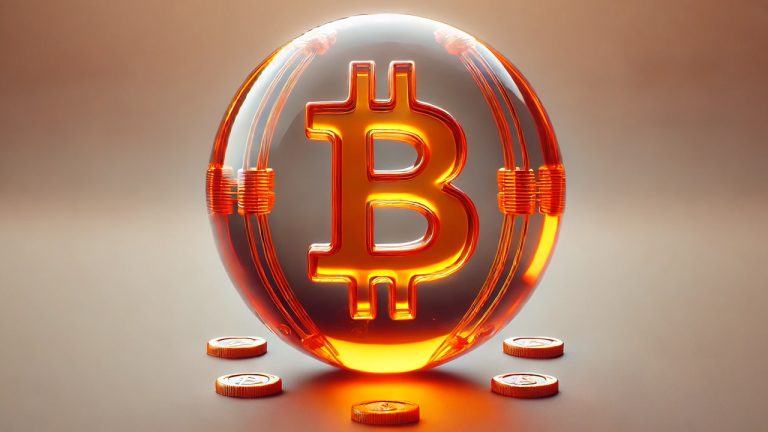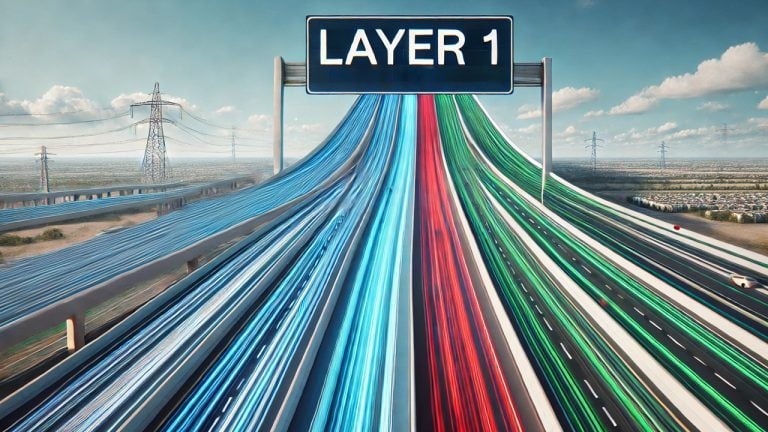 Ethereum and Bitcoin, two of the world’s largest blockchains, are facing significant challenges in scaling their networks. As more users and transactions move to layer two (L2) solutions, these systems could undermine the security and sustainability of the base layer (L1), with fees and rewards for miners and validators dwindling. Growing L2 Adoption Raises Concerns […]
Ethereum and Bitcoin, two of the world’s largest blockchains, are facing significant challenges in scaling their networks. As more users and transactions move to layer two (L2) solutions, these systems could undermine the security and sustainability of the base layer (L1), with fees and rewards for miners and validators dwindling. Growing L2 Adoption Raises Concerns […] This year, Bitcoin layer two (L2) solutions and sidechains have gained incredible traction, with the top ten Bitcoin-based sidechains or L2 protocols now controlling a combined $1.31 billion in total value locked (TVL). The latest figures reveal that more than 56% of this total is held within two prominent networks: Core and Bitlayer. Core and […]
This year, Bitcoin layer two (L2) solutions and sidechains have gained incredible traction, with the top ten Bitcoin-based sidechains or L2 protocols now controlling a combined $1.31 billion in total value locked (TVL). The latest figures reveal that more than 56% of this total is held within two prominent networks: Core and Bitlayer. Core and […] Layer one (L1) blockchain networks, including Ethereum, Solana, and Bitcoin, have experienced a significant reduction in onchain and market activity in 2024. Researchers Tanay Ved and Matías Andrade from Coin Metrics highlight the challenges these networks face as total fees and token performance drop below early-year highs. Ethereum, Solana, and Bitcoin See Sharp Drop in […]
Layer one (L1) blockchain networks, including Ethereum, Solana, and Bitcoin, have experienced a significant reduction in onchain and market activity in 2024. Researchers Tanay Ved and Matías Andrade from Coin Metrics highlight the challenges these networks face as total fees and token performance drop below early-year highs. Ethereum, Solana, and Bitcoin See Sharp Drop in […]

The future of Bitcoin rollups will depend on continued innovation and optimization in data compression and scalability.
A Galaxy Research report has suggested that most Bitcoin layer-2 scaling networks, particularly “rollups,” may not be sustainable in the long term despite their popularity as a promising method to keep Bitcoin payments cheap, fast and decentralized.
In the report published on Friday, Aug. 2, Galaxy analyst Gabe Parker highlighted the cost of posting data as a fundamental challenge Bitcoin rollups face that post data to the base layer.
Parker explained that for Bitcoin rollups to thrive, they must generate substantial revenue from transaction fees on their own networks. This revenue must come from many users willing to pay for transactions on the layer-2 networks.

Block times can also be adjusted as desired. The root mainnet shard features an average block time of just two seconds.
Blockchain network Zilliqa has officially released the white paper and roadmap for its highly anticipated version 2.0 upgrade, which will deploy on the mainnet later in 2024.
According to the network, the new version promises to improve the platform, making it faster, more efficient and capable of working with other blockchain networks.
At Zilliqa 2.0’s core is its sharding architecture, called x-shards. This feature allows businesses and developers to create customized blockchain experiences tailored to their needs, enabling users to build whatever they envision on the Zilliqa platform.

The potential flip could further cement Solana’s status as an “Ethereum-killer,” which has been questioned due to the recent network outages.
The Solana network could be on track to overtake the Ethereum network in transaction fees, a potentially significant development for Solana’s status as a so-called “Ethereum-killer.”
Solana could flip Ethereum’s transaction fees as soon as this week, according to Dan Smith, senior research analyst at Blockworks, who wrote in a May 7 X post:
Captured MEV, or Maximal Extractable Value, refers to profits that are mostly captured through arbitrage trading on the protocols. MEV measures the maximum amount of value that can be extracted from a blockchain by a user or a group of users.
 On December 9, Polygon co-founder Mihailo Bjelic announced that the project has acquired the Ethereum scaling startup Mir in a $400 million deal. The Mir team of cryptographers and engineers are joining Polygon in order to create a “highly-scalable, Ethereum-compatible ZK rollup” called Polygon Zero. Mihailo Bjelic: ‘Polygon Is Focused on Zero-Knowledge Cryptography as the […]
On December 9, Polygon co-founder Mihailo Bjelic announced that the project has acquired the Ethereum scaling startup Mir in a $400 million deal. The Mir team of cryptographers and engineers are joining Polygon in order to create a “highly-scalable, Ethereum-compatible ZK rollup” called Polygon Zero. Mihailo Bjelic: ‘Polygon Is Focused on Zero-Knowledge Cryptography as the […] Vitalik Buterin, one of the most renowned Ethereum founders, has rebuffed Elon Musk’s take on fixing cryptocurrencies in a new paper where he details the limits of blockchain scalability. Buterin touches on three subjects: storage, bandwidth, and computing power, commenting on their limits with today’s tech. Vitalik Buterin Criticizes Elon Musk’s Simplistic Take Vitalik Buterin, […]
Vitalik Buterin, one of the most renowned Ethereum founders, has rebuffed Elon Musk’s take on fixing cryptocurrencies in a new paper where he details the limits of blockchain scalability. Buterin touches on three subjects: storage, bandwidth, and computing power, commenting on their limits with today’s tech. Vitalik Buterin Criticizes Elon Musk’s Simplistic Take Vitalik Buterin, […]